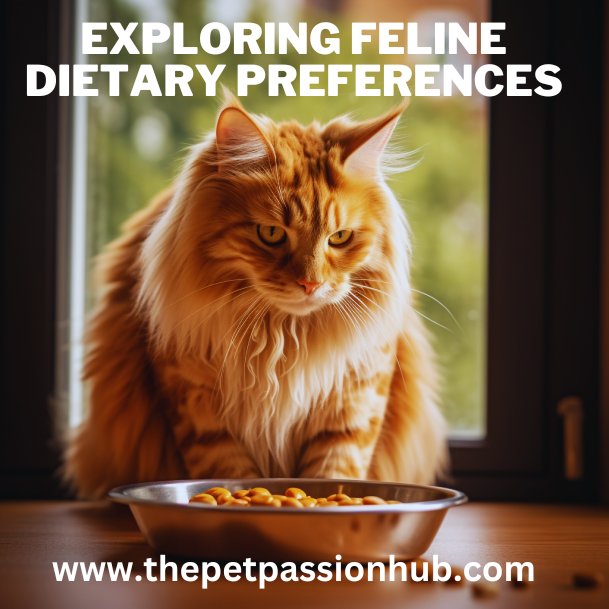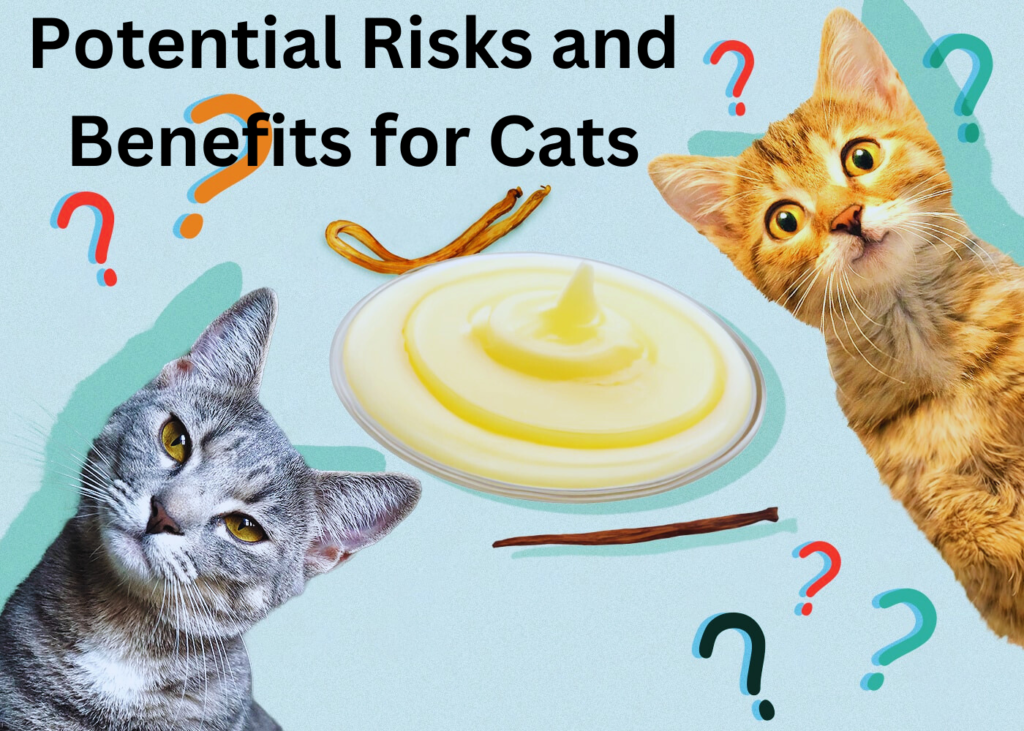Introduction
Have you ever found yourself sneaking a spoonful of vanilla pudding, only to be met with those big, pleading eyes of your feline friend?
The Ultimate Cat Conundrum: Is Vanilla Pudding Safe for Felines? delves into the mysterious world of cat cravings and human treats.
As pet owners, we often find ourselves torn between wanting to spoil our beloved cats and ensuring their health and safety.
But when it comes to indulging in a creamy bowl of vanilla goodness, where does the line blur?
This article aims to unravel the enigma surrounding whether vanilla pudding is a harmless indulgence or a potential danger for our curious whiskered companions. Is Vanilla Pudding Safe for Felines?
The Ultimate Cat Conundrum
The key ingredients in vanilla pudding are milk, sugar, eggs, and vanilla flavoring. Milk provides the creamy texture, while the sugar adds sweetness.
The eggs act as a thickening agent to give pudding its luscious consistency. Vanilla flavoring is added for that classic aromatic taste that we all love.
It’s important to note that some vanilla pudding recipes may also include gelatin or cornstarch for additional thickness.
This combination of ingredients creates a delectable dessert that is loved by many.
However, when it comes to feeding your feline friend vanilla pudding, it’s crucial to consider the potential harm certain ingredients can pose to their health.
Understanding these primary components of vanilla pudding gives insight into its appeal and sheds light on why it might not be suitable for feline consumption.
It’s essential to explore alternatives or moderation when offering treats to our furry friends, keeping their well-being at the forefront of our choices. Is Vanilla Pudding Safe for Felines?
Exploring Feline Dietary Preferences
While vanilla pudding may seem harmless, the potential risks and benefits for cats should be carefully considered.
On one hand, the sweet and creamy texture of vanilla pudding may appeal to cats, making it a potentially enticing treat.
However, it’s essential to acknowledge the potential risks associated with feeding pudding to felines.
Cats have specific dietary needs that must be met, and indulging in sugary treats like vanilla pudding can lead to weight gain, diabetes, and gastrointestinal issues.
On the flip side, some argue that a small taste of vanilla pudding could provide mental stimulation for cats and serve as an occasional indulgence.

Additionally, if the pudding is made with high-quality ingredients and minimal added sugars or artificial sweeteners. There may be some potential benefits in terms of flavor enrichment for picky eaters or as a way to administer medication.
Ultimately, understanding both the risks and benefits is crucial when considering offering vanilla pudding or any non-traditional treats to our feline companions.
The Ultimate Guide to Understand Why Your Cat walk Slowly?
Understanding the Ingredients of Vanilla Pudding
Expert opinions and veterinary perspectives play a crucial role in understanding what foods are safe for our feline friends.
While some sources may claim that vanilla pudding is harmless for cats, veterinarians caution against it due to its high sugar and dairy content.
According to Dr. Sarah Watson, a renowned feline nutrition specialist, While cats may show interest in dairy-based treats like pudding.
Their digestive systems are not equipped to process lactose effectively, leading to potential gastrointestinal upset.
This insight sheds light on the importance of consulting with professionals before incorporating human foods into a cat’s diet.
On the other hand, Dr. Michael Chang emphasizes the need for individualized assessment when it comes to feline nutrition.
He explains that Some cats may tolerate small amounts of vanilla pudding without issues, but it’s crucial to monitor for any adverse reactions such as vomiting or diarrhea.
This nuanced perspective highlights the complexity of pet dietary considerations and reinforces the idea that there is no one-size-fits-all approach when it comes to feeding our beloved feline companions.
By seeking expert opinions and veterinary perspectives, cat owners can make informed decisions that prioritize their pets’ well-being.
Can Cats Eat Vanilla Pudding? Vet Approved Facts & FAQ
Potential Risks and Benefits for Cats
As a cat owner, it’s vital to ensure your feline friend’s safety and well-being at all times.
To start with, regular veterinary check-ups are essential for monitoring your cat’s health and catching any potential issues early on.
Additionally, providing a balanced diet that includes high-quality cat food is crucial for their overall health and longevity.

In addition, maintaining a clean litter box and dedicating time to play and interact with your cat helps stimulate their physical and mental well-being.
Lastly, keeping toxic substances such as chocolate, plants like lilies, or human medications out of reach is paramount in preventing accidental poisoning.
By incorporating these practical suggestions into your daily routine as a cat owner, you can ensure a safe and happy environment for both you and your beloved pet.
Remember to consider the compatibility of any new treats or indulgences such as vanilla pudding with your cat’s dietary needs before offering them.
While many cats may enjoy the occasional special treat like pudding in small quantities. It’s important to first consult with your veterinarian to confirm its safety for your specific feline companion.
Expert Opinions and Veterinary Perspectives
In conclusion, making informed decisions for your feline requires careful consideration and research.
It’s essential to prioritize your cat’s health and well-being when introducing new foods or products into their routine.
Understanding the potential risks and benefits of different choices. Such as offering vanilla pudding to your cat, can help you make the best decision for their diet.
When it comes to feeding your feline friend, consulting with a veterinarian is invaluable. Your vet can provide personalized recommendations based on your cat’s unique needs and dietary requirements.
Additionally, staying updated on credible sources of information regarding feline nutrition and health. It will empower you to make informed decisions that align with the best interests of your beloved pet.
Ultimately, being proactive and mindful in your decision-making process will ensure that you are providing the best care for your feline companion.
Remember that every choice matters when it comes to your cat’s well-being, so take the time to educate yourself. And seek professional guidance to make thoughtful decisions that support a long and happy life for your furry friend.
Practical Recommendations for Cat Owners
As a cat owner, it’s crucial to understand that vanilla pudding may not be the safest treat for your feline friend.
While a small taste of vanilla itself is unlikely to harm your cat. The high sugar content and dairy ingredients in commercial vanilla pudding can pose risks.
Cats are lactose intolerant by nature, and consuming dairy products like pudding may lead to digestive issues such as diarrhea or vomiting.
Furthermore, excessive sugar intake can contribute to obesity and diabetes in cats. So it’s essential to be mindful of these potential health concerns when considering treats for your furry companion.
Instead of tempting your cat with vanilla pudding, consider offering them small amounts of plain, unsweetened yogurt as an occasional treat.
Unlike traditional dairy products, some cats can tolerate yogurt due to its lower lactose content and beneficial probiotics.
However, it’s best to introduce new foods gradually and monitor your cat’s reactions closely.
Prioritizing a balanced diet based on their individual nutritional needs will ensure that your feline friend stays healthy and happy for years to come.
Conclusion: Making Informed Decisions for Your Feline
In conclusion, making informed decisions for your feline’s diet is crucial to their overall health and well-being. Is Vanilla Pudding Safe for Felines?
When it comes to the ultimate cat conundrum of whether vanilla pudding is safe for felines. It’s important to consider their digestive sensitivity.
Cats can have delicate stomachs and may not tolerate certain ingredients found in human foods.
It’s essential to consult with a veterinarian or animal nutritionist before introducing any new food into your cat’s diet. Especially when dealing with potentially problematic ingredients like dairy and artificial flavorings.
Furthermore, understanding your individual cat’s specific dietary needs is key in making informed decisions.
Just as humans have varying nutritional requirements, cats also have unique preferences and sensitivities.
Paying attention to how your feline reacts to different types of foods can provide valuable insights into what works best for them.
By carefully considering their digestive sensitivity and making educated choices about what you feed them. You can help ensure that your beloved cat enjoys a healthy and fulfilling life.
FAQs
Q1: Can cats eat vanilla pudding?
A1: No, cats should not eat vanilla pudding as it can contain ingredients that are harmful to them.
Q2: What are the potential risks of giving vanilla pudding to cats?
A2: Potential risks include digestive upset, possible toxicity from certain ingredients, and weight gain from the high sugar content.
Q3: Are there any safe alternatives for cats who enjoy sweet treats?
A3: Yes, small amounts of plain cooked meat or fish can be a safer alternative for treating your cat.
Q4: Can a small amount of vanilla pudding harm my cat?
A4: Even a small amount can potentially cause digestive issues or other health problems in cats.
Q5: How do I know if my cat has eaten something toxic like vanilla pudding?
A5: Look for signs such as vomiting, diarrhea, lethargy, and loss of appetite. If you suspect your cat has ingested something harmful, contact your veterinarian immediately.
Q6: Why is chocolate pudding bad for cats but vanilla pudding is also unsafe?
A6: Both types of puddings contain ingredients that are harmful to cats, including sugar and potentially toxic additives.
Q7: Can kittens have vanilla pudding?
A7: Kittens should not have any type of pudding or sweet treat as their digestive systems may be more sensitive than adult cats’.
Q8: What should I do if my cat has already eaten some vanilla pudding?
A8: Monitor your cat closely for any signs of illness and contact your veterinarian for guidance on what steps to take next.
